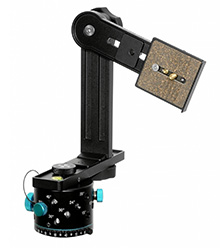My favorite lenses
Every photographer has their favorite lenses they prefer to use. And it’s not different for me. So today, I will share with you that which three lenses are the favorite from the ones I use. Feel free to share in the comments which ones are you favorite :)
Canon 17mm f4 TSE lens
The Canon 17mm f4 TSE lens is quite an unusual one. Tilt shift lenses, while quite popular with architecture photographers, are not that widely used by other ones. But they are just so great. Not only you can correct perspective distortion in your photos, but you can get views that are normally just not possible. I personally just love to do vertoramas with it, especially of tall buiding while standing really close to them (you seen many photos of the Eiffel tower like that on the blog :))
One of the points I think about, while taking photos, is to take a unique photo, that nobody did before. It’s not really easy if you do landscape and architecture. And using a less used lens, can help you with that, buy giving you a bit different view. That also a reason that I like to do so many panoramas and vertoramas.
Here is one of the many vertoramas I took with this lens.
Canon 24-70mm f2.8 lens
This is my basic go to lens. It could have been a different lens, like a 24-105 or any other with a similar range. It’s just something you grab when you don’t know what you need. The range is good for 90% situations and it just works well. Also making panoramas with this lens without a panoramic head works perfectly.
There is a so called lens trinity in photography. A wide angle (16-35mm or 14-24mm lens) a normal lens (24-70mm) and a zoom lens (70-200mm). With this combination, you will cover a very huge range. But do you need them all? Probably not. It all depends on what type of photos you do.
Let me give you an example. I have a 70-200mm lens. I carry it with me only about 10% of the time, only when I’m sure I will need it. If I need to zoom in, I have the 24-70mm lens, and since my camera is 30Mpix, I can easily crop quite a lot. So If I zoom into 70mm and crop down to 15Mpix, it’s the same as having a 140mm lens with me. This is of course not enough in all cases, but it works well most times.
Here is one of the many panoramas I took with this lens.
Laowa 12mm f2.8 lens
The last of these three is the Laowa 12mm f2.8 lens. It’s the latest lens I bought so the one I have been using for the shortest time. I love doing wide angle photos. And the wider you can go, the better. It’s quite common with architecture and city photos, that you just can’t move further back from something. There is just no place to go. And where sometime a tilt shift lens works better, it’s not all the time.
This ultra wide view of the world is just so different to what most of other lenses and cameras capture. And the more
different it is, the more I like it.
Here is one of the photos I took with this lens.
So these are currently my favorite lenses, and if I go out taking photos, these three are mostly in my bag. Which ones you carry with you?


























 A panoramic head, is quite a big tripod head, that has two main functions. First is to move the sensor back from the center of rotation, so you avoid paralax shift (will explain in a moment what it is). The second is to allow you to rotate the camera horizontally and vertically in exact increments.
A panoramic head, is quite a big tripod head, that has two main functions. First is to move the sensor back from the center of rotation, so you avoid paralax shift (will explain in a moment what it is). The second is to allow you to rotate the camera horizontally and vertically in exact increments.












